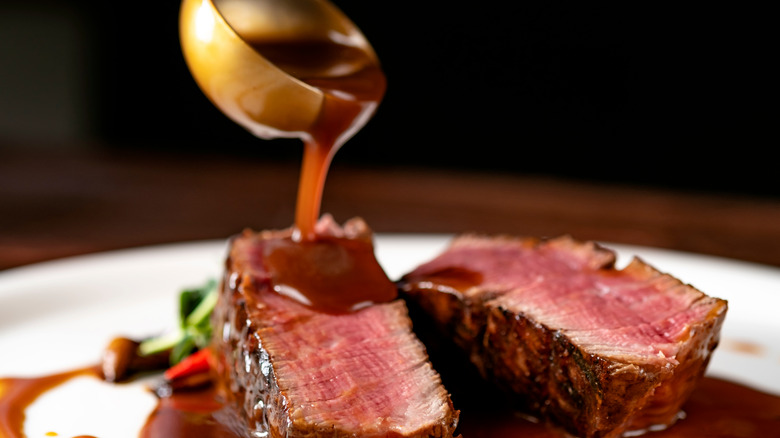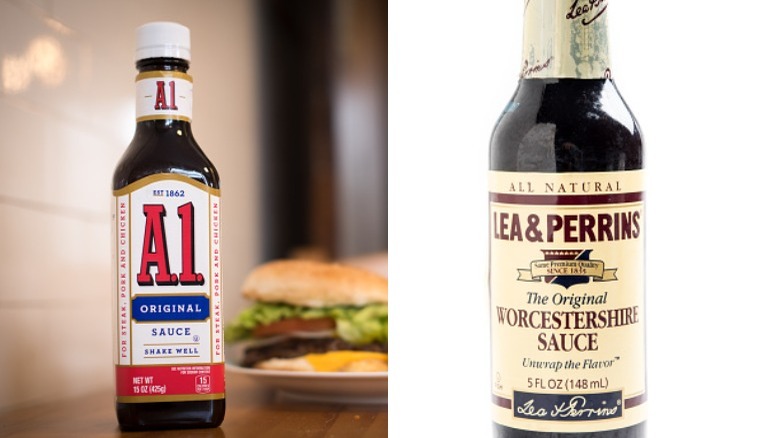No, Worcestershire And A1 Sauces Are Not The Same Thing
Cooking a perfect steak is a skill that takes plenty of time to master, especially since there's no shortage of ways to cook nice cuts of beef. And there are just as many condiments to go with it, from chimichurri in Argentina to spicy lime-forward Jeow Som in Laos. But in America, it's A.1. Sauce. Although its popularity is waning a bit, the savory and slightly sweet condiment still holds a place of honor at many steakhouses. Although people tend to confuse the two, A.1. is actually quite different from Worcestershire sauce, which is a key ingredient in many barbecue sauces that can be eaten with steak, too.
The primary difference between the two sauces is the base each uses. Like ketchup and some barbecue sauces, A.1. has tomato paste as its primary ingredient. The sauce also contains vinegar, raisin paste, crushed orange puree, and other spices. Worcestershire sauce, on the other hand, is made from mostly vinegar, with anchovies and tamarind for its classic funky-fruity balance. Worcestershire sauce is also unique in that it's fermented — yet another way A.1. and Worcestershire are not the same thing. A.1. Sauce has a slightly sweeter flavor, and Worcestershire sauce supplies a savory umami depth to any dish. A.1. Sauce is also much thicker than Worcestershire sauce.
Despite parallel histories, A.1. and Worcestershire sauces have different uses
Both A.1. and Worcestershire sauce have a common ancestor: British imperial interpretations of Indian chutneys. Each condiment was invented in the U.K. in the 19th century to bring bold spices and classically Indian flavors — such as tamarind, in the case of Worcestershire — to wealthy Britons. But that's about where their similarities end.
Besides the differences in ingredients, the two sauces also have different functions in the kitchen or at the dinner table. A.1. is commonly used as a finishing sauce or condiment — although in its native England, competitor HP Sauce is more popular, so you won't actually find A.1. in the U.K. On the flip side, Worcestershire sauce can be used as an ingredient, too, so plenty of recipes — upwards of 30,000, by some accounts — call for the sauce or one of its many possible substitutions as a raw ingredient in marinades, dressings, cocktails, and more.
Like A.1., Worcestershire had its U.S. heyday in the early- to mid-20th century. Unlike its cousin, though, Worcestershire sauce is still selling incredibly well and remains a kitchen power player.

